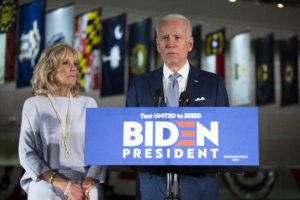The Dark Side of Roberts’ Ruling
With the "salvation" of the Affordable Care Act, the Roberts court has pushed constitutional authority toward a form of federalism that advances the interests of corporations above the rest of society.
The individual mandate is constitutional and the media spin is in. In switching his vote at the eleventh hour and upholding the central pillar of the Patient Protection and Affordable Care Act — albeit as a tax — Supreme Court Chief Justice John Roberts not only came to the rescue of the president’s primary domestic achievement, but also to the rescue of the court itself. With the stroke of his judicial pen, Roberts moved the institution away from the partisan divide that has crippled the country’s civic life and politics and restored the court’s reputation as an independent bulwark committed only to the rule of law. So let the canonizations of the chief begin; at least the branch of government under his wise guidance is above the fray.
Except that the court isn’t above the fray; it’s smack in the middle of it. To be sure, the spin has some things right. The outcome of the Obamacare ruling was both unexpected and a victory for the president. The survival of the mandate also will enable millions of Americans to obtain health insurance, which, while falling substantially short of universal coverage, is a bold improvement over the status quo.
But the spin omits a darker side to the controlling opinion authored by the chief justice — a side that when exposed shows that little has changed in the overall long-term political and constitutional direction of the Roberts court. That direction remains very much on target, aimed at shifting the balance of constitutional authority away from the federal government, at least as far as social programs are concerned, in favor of more conservative and cash-poor state governments in a return to a pre-New Deal era form of federalism that in the process advances and protects the interests of corporations above all other segments of society.
Ordinarily, we might have expected liberal pundits and commentators such as MSNBC headliners Lawrence O’Donnell, Rachel Maddow and Ed Schultz or New York Times Supreme Court reporter Adam Liptak to lead the way exposing the dark side of the Obamacare decision. But for the most part, they and many others have been preoccupied with promoting the dominant narrative of Roberts as judicial savior.
To get a sense of the dark side one has to turn, ironically, to the primary architect of the legal challenges to Obamacare, constitutional law professor Randy Barnett of the Georgetown University Law Center. In an Op-Ed in The Washington Post on June 29, Barnett explains that the challenge to Obamacare had two objectives: saving the nation from the Affordable Care Act and saving the Constitution. In his estimation, and in the view it should be added of like-minded conservative activists from the Federalist Society and the Cato Institute, the Roberts opinion was a split decision, and on balance his side prevailed. Barnett and his cronies lost the battle over the Affordable Care Act but won the war over the Constitution.
First and foremost, Barnett reasons, his side won on the commerce clause. The administration sought to uphold the individual mandate as a valid exercise of congressional authority under the commerce clause of the Constitution both because the act itself (Subtitle F, Part I, to be exact) explicitly states that the mandate is warranted because buying health insurance “substantially affects interstate commerce,” and because the commerce clause since 1937 has been broadly interpreted to uphold a wide array of national initiatives in areas including fair labor standards, civil rights and environmental protection.
In striking down the administration’s commerce clause contentions, Roberts’ analysis accepted without qualification the position Barnett and company had advocated — that the regulation of interstate commerce may not include mandates to participate in commercial activity, whether the activity is one that accounts for more than 17 percent of GDP and that every person eventually will engage in, such as receiving medical care, or the hapless analogy of buying broccoli. Most important, the analysis, Barnett argues, is a “binding holding for future courts to follow,” firmly establishing limits to federal authority where none previously existed.
In Barnett’s view, the Supreme Court also handed his side a decisive victory on the constitutional spending powers of Congress, overturning as “coercive” Obamacare’s mandatory expansion of Medicaid, marking the first time since the New Deal that the court has invalidated a law for exceeding the spending power. The Medicaid expansion — which had required states, largely at federal expense, to increase the number of poor people covered by Medicaid or face a total loss of Medicaid funding — is in jeopardy as right-wing governors from such states as Louisiana, Florida and Wisconsin threaten not to participate in the expansion, which is now optional. Also placed in jeopardy are any future federal spending initiatives that the Roberts court might deem similarly coercive.”All of this represents,” Barnett continues, “a fundamental departure from how most law professors viewed constitutional law” before the Roberts opinion was issued. Indeed, given the court’s past precedents on the commerce clause, an article in Bloomberg Businessweek on the eve of the oral arguments in March predicted that the individual mandate would be upheld by a resounding vote of 8 to 1, with Clarence Thomas voicing the lone dissent.
Plainly, the outcome of the Obamacare litigation should have been a no-brainer. It became instead a nail-biter decided on the slenderest of reeds (the power to tax) — a backup argument only belatedly embraced by the administration and, according to some news outlets, adopted only at the last minute by Roberts himself.
The reason for Roberts’ turnaround is also plain. The chief justice — who once clerked for William Rehnquist and served as a deputy solicitor general under George H.W. Bush — hasn’t suddenly morphed into a consensus building moderate. Nor have the court’s other conservatives changed. If anything, they have evolved into an even more mean-spirited version of the tribunal that handed down Citizens United two years ago.
Next term, as the nation votes in a presidential election that could determine the court’s composition for a generation, the docket will include cases on affirmative action, voting rights and in all likelihood same-sex marriage. The stakes couldn’t be higher. For American liberals and progressives, it’s time to end the celebrations over Obamacare and refocus on the long hard slog of reclaiming the court.
Your support matters…Independent journalism is under threat and overshadowed by heavily funded mainstream media.
You can help level the playing field. Become a member.
Your tax-deductible contribution keeps us digging beneath the headlines to give you thought-provoking, investigative reporting and analysis that unearths what's really happening- without compromise.
Give today to support our courageous, independent journalists.






You need to be a supporter to comment.
There are currently no responses to this article.
Be the first to respond.